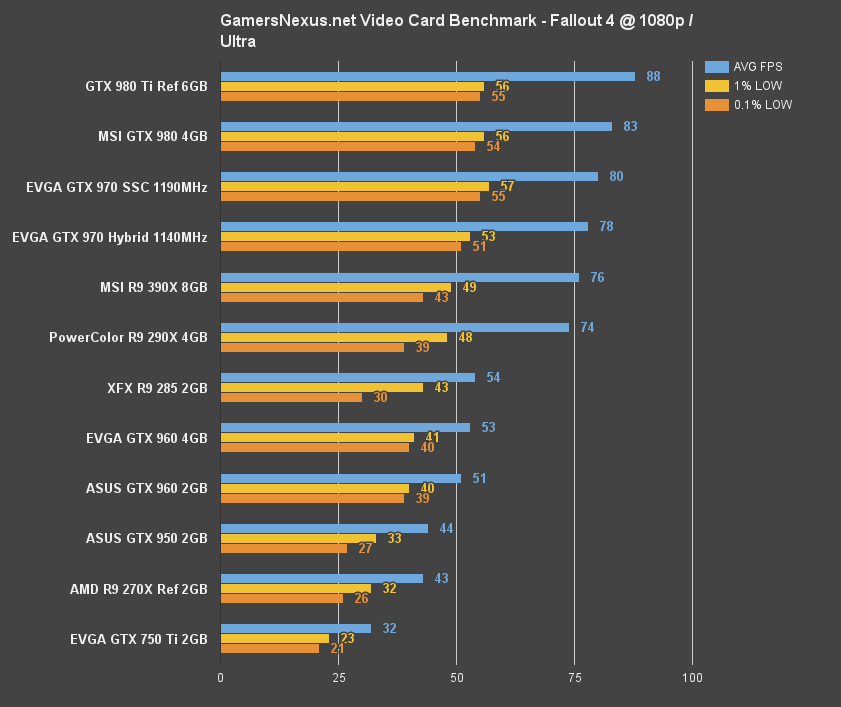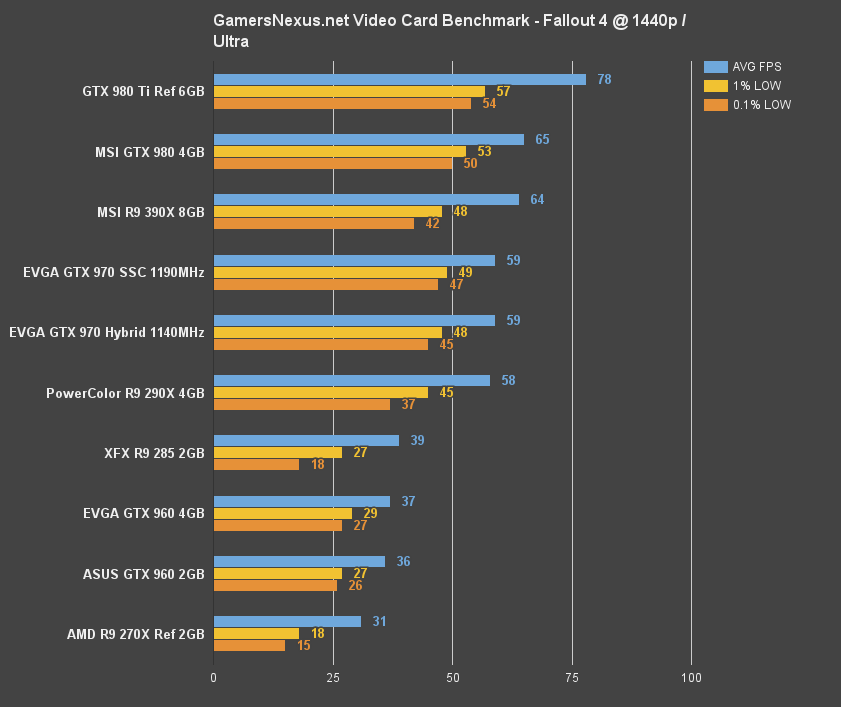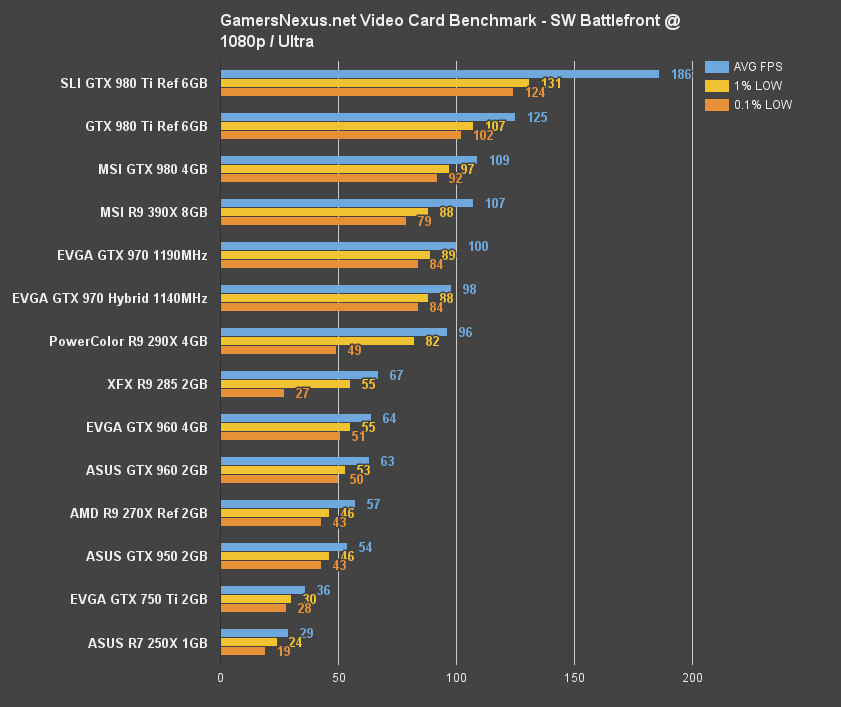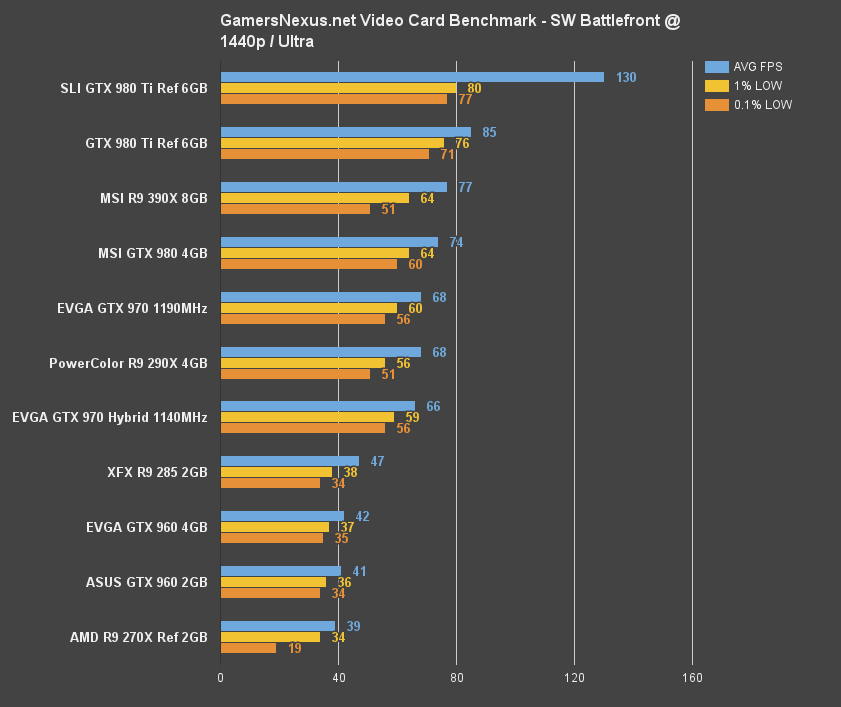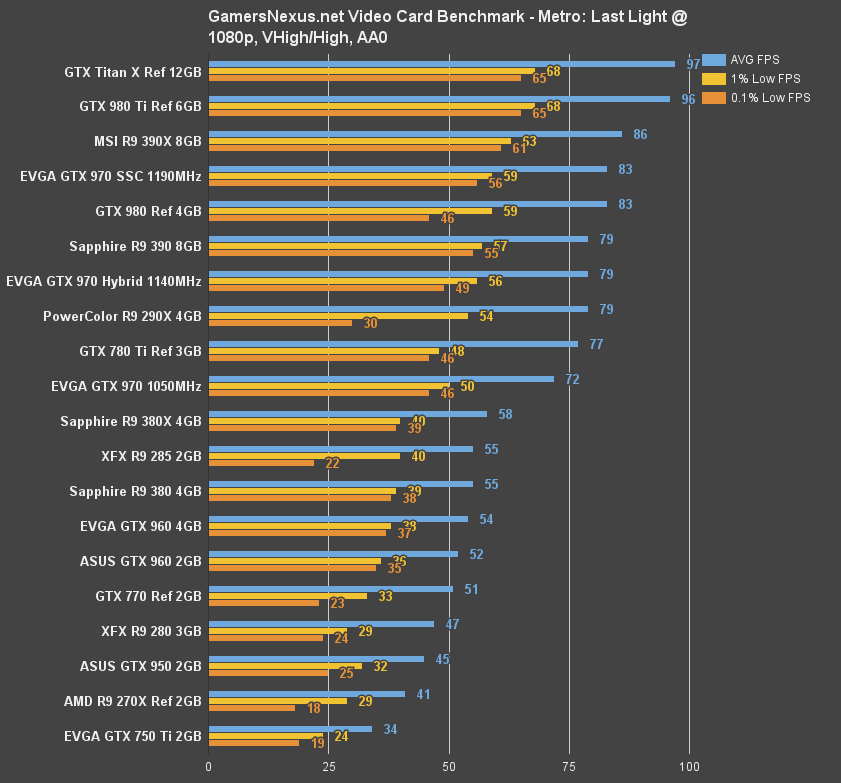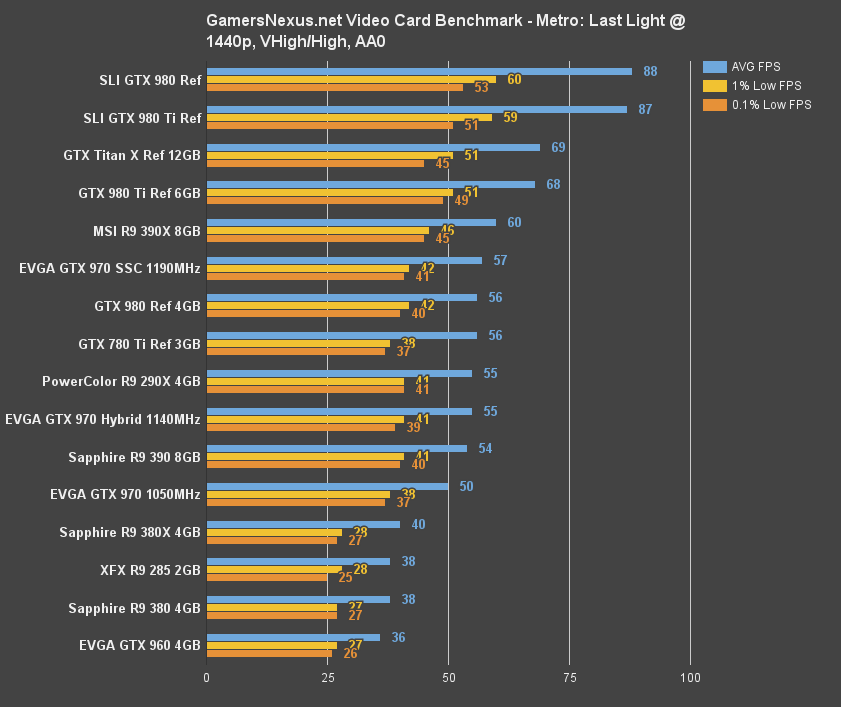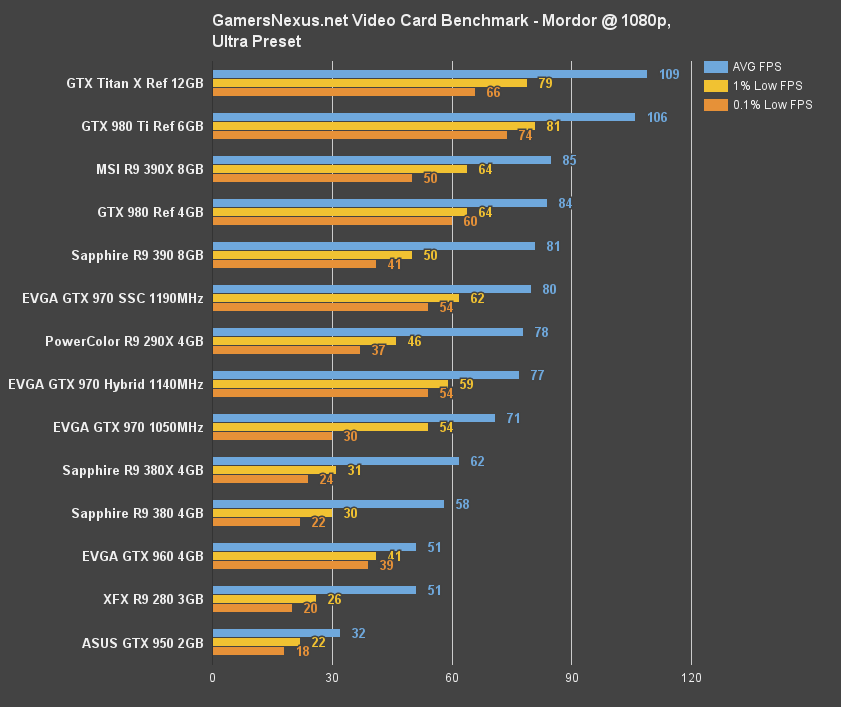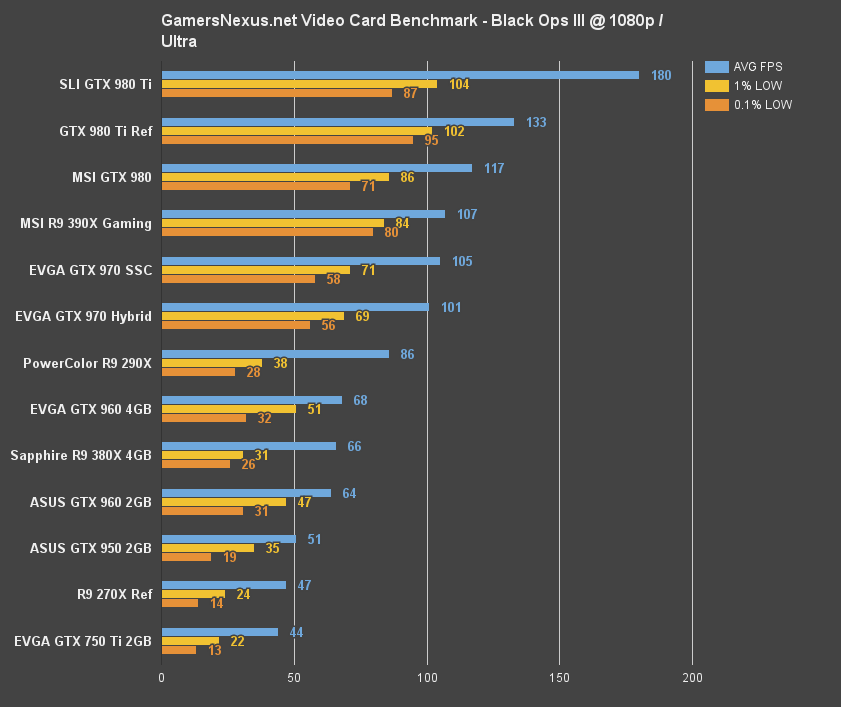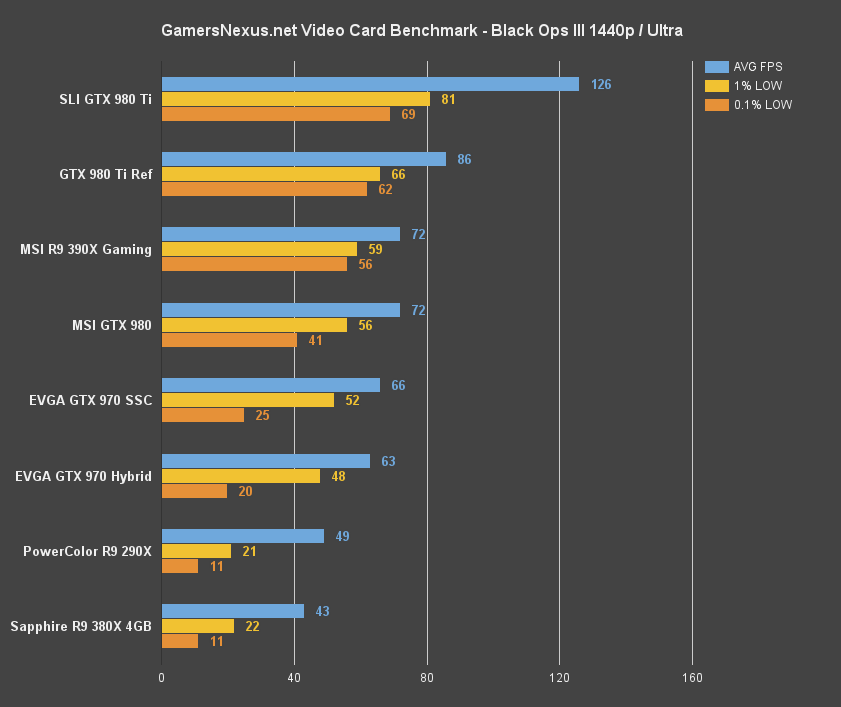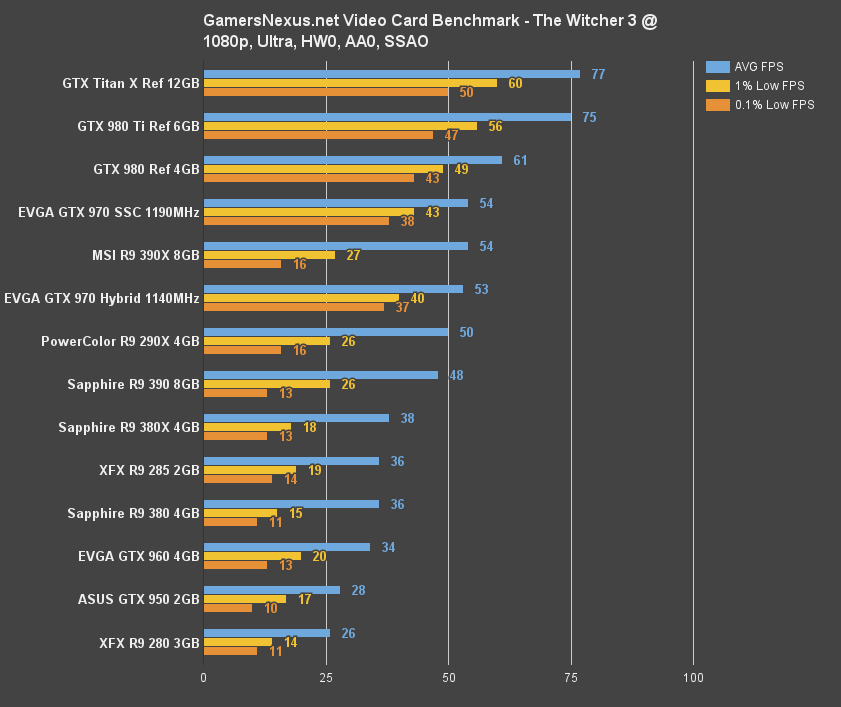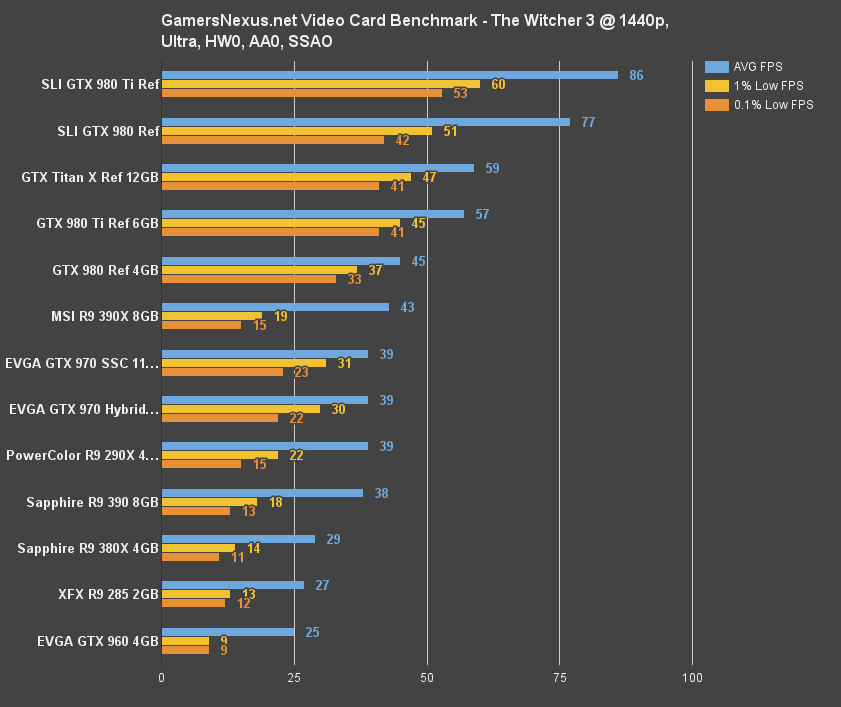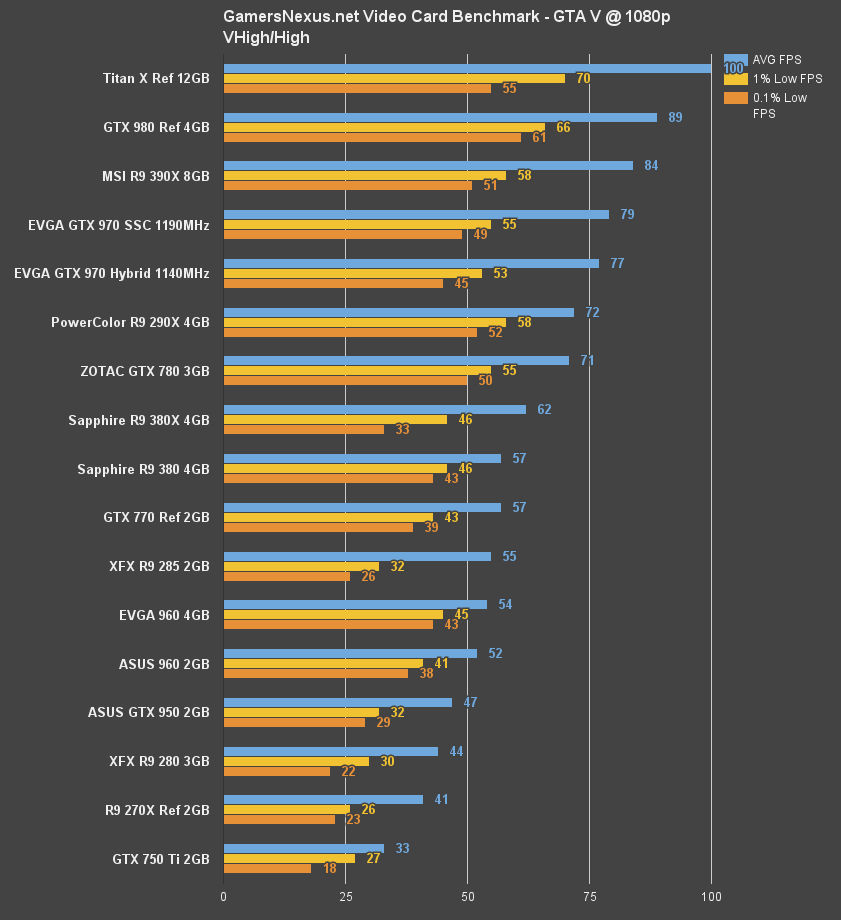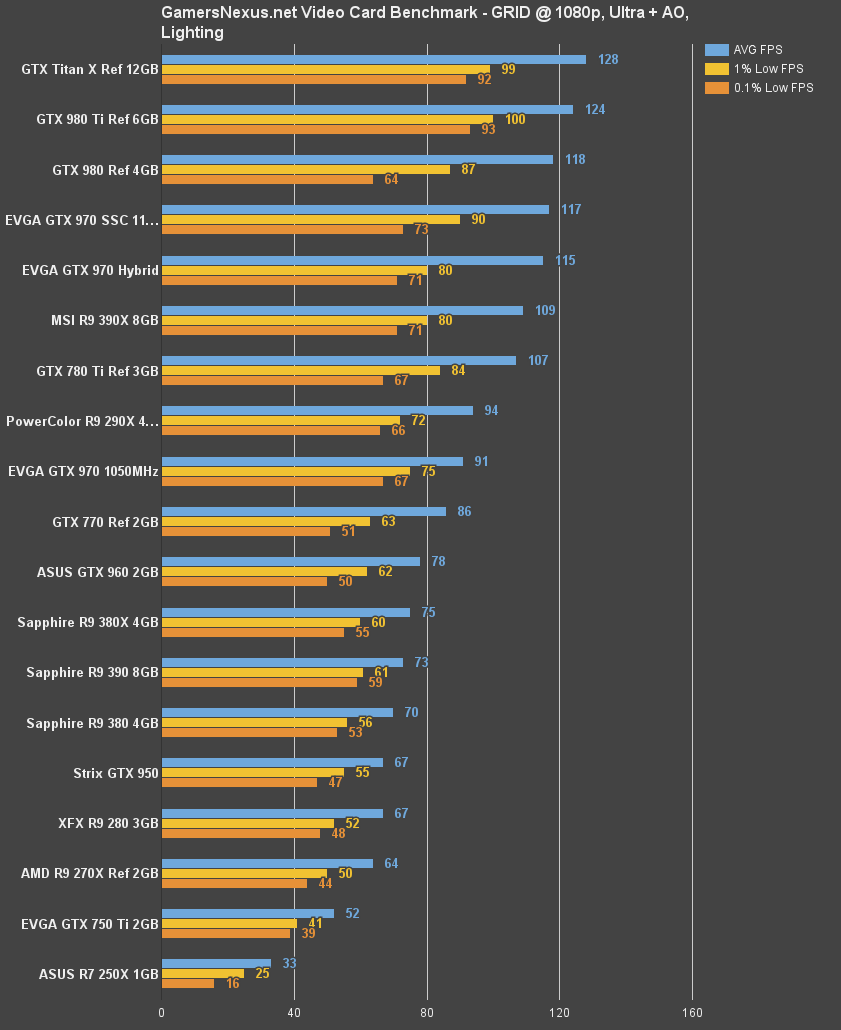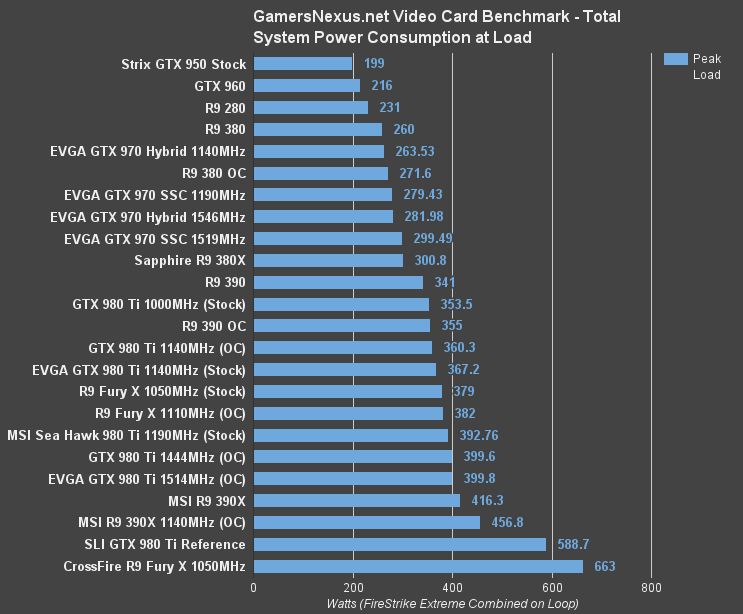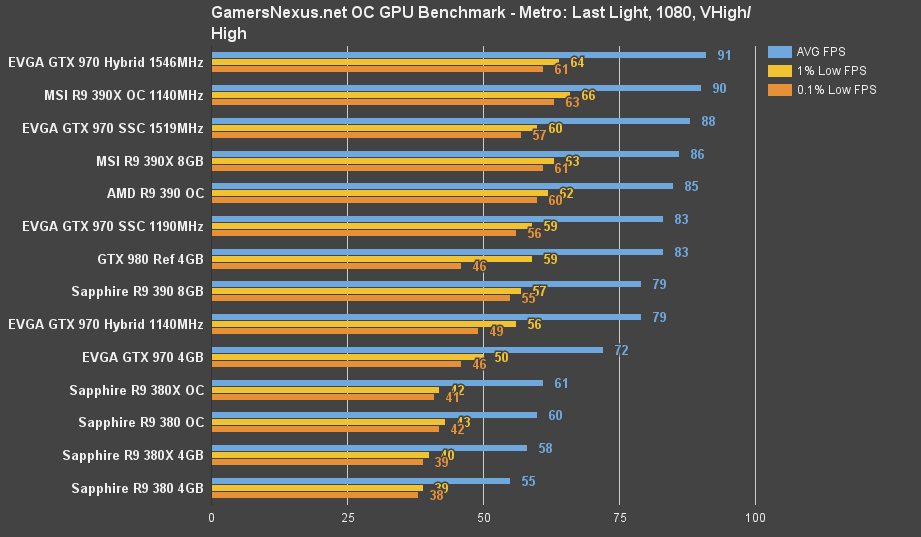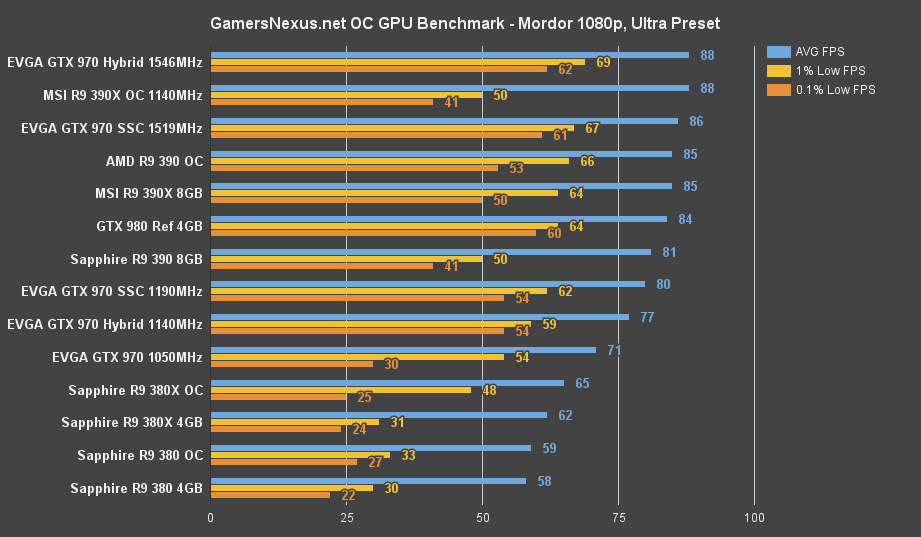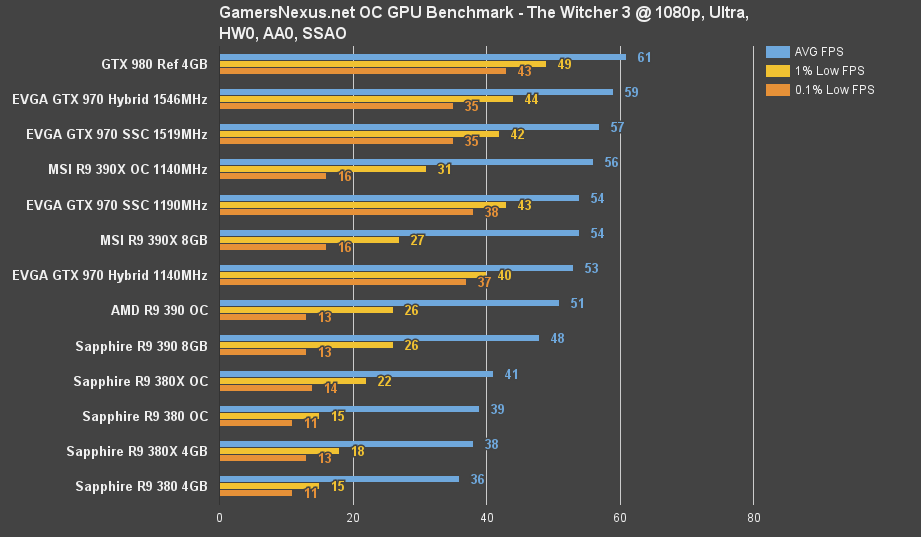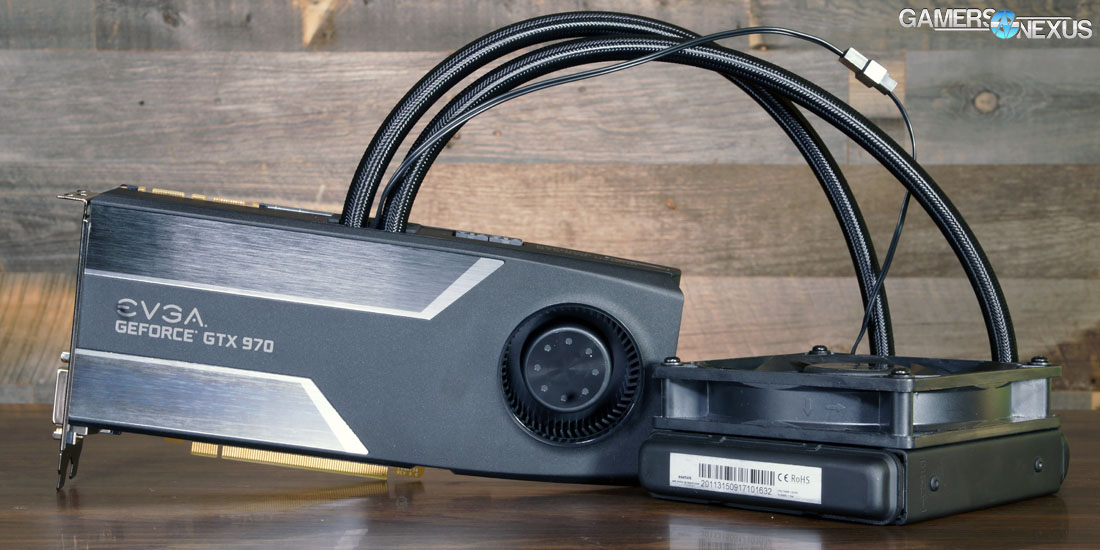Liquid-cooled graphics cards have blown up over the past year. They've existed before, but never to the level of publicity as spurred-on by AMD's Fury X and nVidia's high-end Maxwell board partners. With the MSI Sea Hawk 980 Ti, we explained why CLC systems for GPUs make excellent sense in the correct use case scenario. We mostly called attention to the obvious thermal reduction on the silicon, increased power efficiency by reducing capacitor leakage, and the ability for high-heat, “Big GPUs” to push more substantial overclocks. This is thanks to an avoidance of thermal throttling of the clock, meaning we become more limited by overall chip stability and BIOS vCore locks.
But liquid doesn't always make sense. CLCs drive the BOM up, increasing what the user pays for the solution. Most CLCs, depending on supplier (read about who really makes liquid coolers), are only good for a few years – five, on average – and that's undesirable to users seeking serious endurance. I'd imagine that most of our audience aims to build or upgrade systems at least once within a five-year period, perhaps mitigating the impact of this consideration. The issue is further diminished by just how easy it is to maintain these things: popping in a new cooler will get it up-and-running again, and they're fairly standardized (in the case of the 970 Hybrid or Sea Hawk, anything by Asetek will work). More work than required for an air-cooled card, but even those face decay from prolonged service life (often thermal compound or pads need to be re-applied).
At the surface, the GTX 970 Hybrid doesn't appear to like an application where “liquid makes sense.” That's what testing is for, and we'll look at use case scenarios for overclocking, ultra-low thermal systems, SFF rigs with thermal concerns, and more.
In this review of EVGA's GTX 970 Hybrid, we benchmark stock and overclocked performance in games (FPS), temperatures, and power consumption.
EVGA GTX 970 Hybrid Specs
| EVGA 970 Hybrid | EVGA 970 SSC | MSI GTX 970 Gaming | GTX 970 Stock | |
| Base Clock (GPU) | 1140MHz | 1190MHz | 1140MHz | 1050MHz |
| Boost Clock (GPU) | 1279MHz | 1342MHz | 1279MHz | 1178MHz |
| Memory Clock | 7010MHz | 7010MHz | 7010MHz | 7000MHz |
| Mem Spec | 4GB GDDR5 256-bit | 4GB GDDR5 256-bit | 4GB GDDR5 256-bit | 4GB GDDR5 256-bit |
| Price | $400 | $350 | $350 | $310 |
At its reference clocks, the original GTX 970 oscillated at 1050MHz base, 1178MHz boost. EVGA's lineup alone contains cards with clocks at 1050MHz (stock) for around $310, 1165MHz cards (“SC Gaming”) at $345, 1190MHz cards (“SSC”) at $350, and now the GTX 970 Hybrid (1140MHz) at $400. And that's just one company – between MSI, ASUS, Gigabyte, PNY, and the half-dozen other manufacturers, clock frequencies scale nearly 200MHz from reference.
The Hybrid's core clock is actually 50MHz lower than EVGA's 970 SSC (1190MHz), effectively guaranteeing lower stock FPS throughput than a device that runs $50 cheaper. The main draw of the Hybrid is clearly its cooling solution, a value-add that will reduce internal case temperatures – useful especially in SFF or shoebox builds – and theoretically increases OC headroom with better thermal management. We'll test that more below.
As with previous CLC-cooled GPUs that we've reviewed, the 970 Hybrid relies on a CLC for direct-to-GPU cooling, sticking with a blower fan for VRM and VRAM dissipation. The CLC used here is the same Asetek unit as found in the GTX 980 Ti Hybrid (detailed here), tuned for GPU cooling with its copper extrusion in the coldplate. MSI & Corsair previously partnered to produce the Sea Hawk 980 Ti, which differs from this approach only by way of deploying a Corsair CLC (built for CPUs) rather than the Asetek GPU CLC. The difference, as we saw in testing, was massive.
The 970 Hybrid uses an identical CLC to the 980 Ti Hybrid. The faceplate is different – uglier, we think, though we don't much comment on aesthetics – but the card design is similar overall. The 970 Hybrid uses a reference board design, which means you should eventually be able to buy a kit to convert other reference 970s to a Hybrid system (EVGA or not). The CLC is the same, blower/VRM cooling is the same, and the overall assembly is the same as the other EVGA “Hybrid” series cards.
Test Methodology
We tested using both of our GPU test benches, as we are in the process of merging into a single GPU test bench. Both are detailed in the tables below. Our thanks to supporting hardware vendors for supplying some of the test components.
The latest AMD Catalyst drivers (15.11.1) were used for testing, except in the case of the Fury X and R9 380/390, which were all on loan and have not been updated since ~15.7. NVidia's 359.00 drivers were used for testing the latest games. Game settings were manually controlled for the DUT. All games were run at presets defined in their respective charts. We disable brand-supported technologies in games, like The Witcher 3's HairWorks and HBAO. GRID: Autosport saw custom settings with all lighting enabled. All other game settings are defined in respective game benchmarks, which we publish separately from GPU reviews. Our test courses, in the event manual testing is executed, are also uploaded within that content. This allows others to replicate our results by studying our bench courses.
Each game was tested for 30 seconds in an identical scenario, then repeated three times for parity.
Z97 bench:
| GN Test Bench 2015 | Name | Courtesy Of | Cost |
| Video Card | This is what we're testing! | - | - |
| CPU | Intel i7-4790K CPU | CyberPower | $340 |
| Memory | 32GB 2133MHz HyperX Savage RAM | Kingston Tech. | $300 |
| Motherboard | Gigabyte Z97X Gaming G1 | GamersNexus | $285 |
| Power Supply | NZXT 1200W HALE90 V2 | NZXT | $300 |
| SSD | HyperX Predator PCI-e SSD | Kingston Tech. | TBD |
| Case | Top Deck Tech Station | GamersNexus | $250 |
| CPU Cooler | Be Quiet! Dark Rock 3 | Be Quiet! | ~$60 |
X99 Bench:
| GN Test Bench 2015 | Name | Courtesy Of | Cost |
| Video Card | This is what we're testing! | - | - |
| CPU | Intel i7-5930K CPU | iBUYPOWER | $580 |
| Memory | Kingston 16GB DDR4 Predator | Kingston Tech. | $245 |
| Motherboard | EVGA X99 Classified | GamersNexus | $365 |
| Power Supply | NZXT 1200W HALE90 V2 | NZXT | $300 |
| SSD | HyperX Savage SSD | Kingston Tech. | $130 |
| Case | Top Deck Tech Station | GamersNexus | $250 |
| CPU Cooler | NZXT Kraken X41 CLC | NZXT | $110 |
Average FPS, 1% low, and 0.1% low times are measured. We do not measure maximum or minimum FPS results as we consider these numbers to be pure outliers. Instead, we take an average of the lowest 1% of results (1% low) to show real-world, noticeable dips; we then take an average of the lowest 0.1% of results for severe spikes. Anti-Aliasing was disabled in all tests except GRID: Autosport, which looks significantly better with its default 4xMSAA, and Black Ops III. HairWorks was disabled where prevalent. Manufacturer-specific technologies were used when present (CHS, PCSS).
- Battlefront test methodology can be found here.
- Black Ops III test methodology is here.
- The Witcher 3 test methodology is here.
- Fallout 4 test methodology is here.
- Assassin's Creed Syndicate methodology is here.
Overclocking was performed incrementally using MSI Afterburner. Parity of overclocks was checked using GPU-Z. Overclocks were applied and tested for five minutes at a time and, if the test passed, would be incremented to the next step. Once a failure was provoked or instability found -- either through flickering / artifacts or through a driver failure -- we stepped-down the OC and ran a 30-minute endurance test using 3DMark's FireStrike Extreme on loop (GFX test 2).
Thermals and power draw were both measured using our secondary test bench, which we reserve for this purpose. The bench uses the below components. Thermals are measured using AIDA64. We execute an in-house automated script to ensure identical start and end times for the test. 3DMark FireStrike Extreme (GFX test 2) is executed on loop for 25 minutes and logged. Parity is checked with GPU-Z.
Thermals, power, and overclocking were all conducted on the Z97 bench above.
X99 Benchmarks
This was discussed in test methodology, but it's worth bringing up again here: We're between two benches right now, transitioning, but we wanted to bring you all the latest game benchmarks. That includes Assassin's Creed: Syndicate and Fallout 4, both tested on our X99 platform. The rest of the games were tested on the Z97 platform.
Fallout 4 Benchmark – GTX 970 Hybrid vs. SSC, 390X, 980
Fallout 4 is one of the poorest-performing titles we've tested all year. There's no denying the game's popularity, though, and so we've inducted it into our GPU bench for the immediate future. We tested Fallout 4 at both 1080p and 1440p resolutions, settings tuned to 'ultra' across the board.
The GTX 970 SSC predictably outperforms the Hybrid, a result of the 50MHz stock gap, but only by about 2.5% on average – that comes out to 2FPS on the 1080p configuration. As we venture into thermals, power, and overclocking, the picture will become more clear as to the card's potential value; as it stands from this first chart, it's a tough sell for marginally lower FPS than on a same-model card.
The Hybrid isn't all about raw stock performance, as we'll find momentarily.
Assassin's Creed Syndicate Benchmark – GTX 970 Hybrid vs. SSC, 390X, 980
We tested Assassin's Creed Syndicate using our “Ultra Custom” settings, a configuration that we devised and developed during methodological research for ACS.
The above results somewhat mirror our Fallout 4 testing, producing a ~2.82% delta between the AVG FPS of the SSC and Hybrid. Again, that translates to about 2FPS AVG. Measurable, well outside of margin of error, but small.
If you're looking at the Hybrid, it's probably also worth looking at the air cooled 390X cards that are out there. In this instance, as we discussed and analyzed in our ACS benchmark, the R9 390X significantly under-performs against the GTX 970 cards – even the cheaper, $350 SSC model.
Star Wars Battlefront Benchmark – GTX 970 Hybrid vs. SSC, 390X, 980
Battlefront shows an even smaller delta at ~2%, ultimately producing yet another ~2FPS gap. Consistency is a good thing. So far, between the three games we've looked at, the 50MHz clockrate disparity has produced about a ~2-3% performance differential.
Z97 Benchmarks
Here's the platform we're transitioning to other tests, but still use for some of the “core” benchmarks.
Metro: Last Light Benchmark – GTX 970 Hybrid vs. Reference 970, SSC
This chart's a little more interesting. Back when we briefly had an EVGA GTX 970 1050MHz card, provided by JPR, we ran it through a few of our then-standard bench games. In Metro: Last Light, the 1050MHz card (from EVGA, making it yet more comparable) lands a full 14.2% lower (AVG FPS) than the SSC model, priced just $40 more. That's a performance gap that becomes noticeable, creating more than a 10FPS swing between the two at 1080p. The Hybrid lands at ~9.3% faster than the 1050MHz card.
At 1440p, the swing is the difference between 50FPS (1050MHz) and 57FPS (1190MHz), with the Hybrid (1140MHz) landing at 55FPS.
Shadow of Mordor Benchmark – GTX 970 Hybrid vs. SSC, 390X, 980
As with Metro: Last Light, we've got the 1050MHz 970 present here as well. This card drives 71FPS AVG, measurably lower than the 77FPS AVG output of the Hybrid (8.1%). The SSC hits 80FPS, which is a gain of 3.8% over the Hybrid and 11.9% over the reference clock.
The three cards fall into a tight cluster at 1440p, ranking 58, 56, and 53FPS AVG across the respective reference clock, Hybrid, and SSC models.
COD: Black Ops III Benchmark – GTX 970 Hybrid vs. SSC, 390X, 980
First off, check our Black Ops III optimization guide to fully understand all of the graphics settings.
Using the same two cards as above and moving to our Z97 bench, which will soon – eventually – be deprecated, we're seeing still similar results. A 1.89% gap separates the performance of the SSC and Hybrid, the SSC leading.
The Witcher 3 Benchmark – GTX 970 Hybrid vs. SSC, 390X, 980
1.87%. There's an obvious trend here and, until we get to thermals and overclocking, it likely won't be broken. The 50MHz clock increase of the SSC over the Hybrid is entirely attributable to the card's performance advantage. The R9 390X lands between the two competing 970s, but suffers from dismal 0.1% low performance, as most AMD cards seem to do in The Witcher 3.
GTA V Benchmark – GTX 970 Hybrid vs. SSC, 390X, 980
This one's exciting – a whole 2.56%. Both cards retain admirable performance, with the R9 390X finally pulling slightly ahead in GTA V.
GRID: Autosport Benchmark – GTX 970 Hybrid vs. SSC, 390X, 980
GRID: Autosport wraps-up our game benchmarks; at least, until we get to the overclocked testing. The GTX 970 Hybrid performs just 1.7% slower than the SSC model, bringing us back down to the relatively uninteresting results.
Continue to the next page for thermals, power, overclocking, and the conclusion!
EVGA GTX 970 Hybrid Thermals
The equilibrium temperatures are shown below. These metrics represent GPU diode temperature as measured using GPU-Z and AIDA64 (parity checked against one another). Ambient is kept constant. The temperature shown in these charts is a Delta T over Ambient value (Celsius).
We run 3DMark FireStrike Extreme (Graphics test 2) on loop for these tests. The test is completely automated and uses an in-house script for self-execution. Once equilibrium is reached, we create the below averaged numbers for each device. This represents about the temperature (dT) of each video card when placed under the duress of a real gaming scenario, which we assume often exceeds 20 minutes (about the time required to achieve equilibrium).
The GTX 970 Hybrid is now the coolest device on our bench, edging-out the 980 Ti Hybrid by about 2.37C. The 980 Ti runs a larger, hotter chip and each device is cooled effectively identically, so this 'victory' isn't all that surprising. It's not until we get into overclocking – in more detail further up – that the 970 Hybrid passes the 980 Ti Hybrid (stock) thermals, landing at 23.72. Still remarkably low and nothing to worry about, even with the high OCs we achieved.
The next CLC-enabled device on our bench is the MSI Sea Hawk 980 Ti, operating at ~40C dT. The Fury X, a completely different architecture and design (including liquid-cooled VRM/VRAM modules, something the EVGA cards don't do), lands at ~41C.
Looking more comparatively against the same architecture, That's 20.53C vs. 54.15C. Even as we look to the overclocked temperatures of the 970 Hybrid (1320MHz base, 1546MHz boost), the gap remains high vs. stock, and that's with a higher clockrate than the 970 SSC.
It's absolutely clear that the 970 Hybrid is thermally superior to its air-cooled counterparts. We can expect that the 970 would run cooler than the 980 Ti, a bigger and warmer GPU, and than the Fury X (which is completely different altogether).
You're certainly paying for that gain, at a minimum of +$50 over the SSC's cost, and whether there's ROI on that expenditure will largely depend on use cases. For most users, the 970 SSC's ~54C (add-in ambient and you're in the mid-70s) is completely acceptable. Anyone in a particularly warm environment or using a hotter case, like an N450 or SFF option, may want to consider liquid here. Competing vendors' cards, though not present, will more or less perform around the same region as the SSC for air-cooled 970s (see: MSI GTX 970 Gaming).
EVGA GTX 970 Hybrid Power Draw
Power above is measured as total system power consumption under a GPU-intensive load. This does not heavily load the CPU; to see power draw under 100% system load, see our “How Many Watts Do You Need?” article.
The GTX 970 Hybrid at 1140MHz (stock) configuration draws 263.53W, 5.86% less than the 1190MHz 970 SSC card. Even as we look to overclocked setups, which lands the Hybrid at 1320MHz base / 1546MHz max, the liquid-cooled card (279.43W) is more power efficient than the 1519MHz SSC (299.49W). In talking to EVGA, this is a result primarily of the SSC's “beefier” power management setup, but we think it can also be attributed to power efficiency gains from liquid (reduction of leakage, for one).
The similarly priced MSI R9 390X Gaming ($420), at 416.3W, draws about 44.94% more power than the 970 Hybrid. Thermals of this particular 390X are approximately 81.38% higher than the Hybrid.
Regardless, nothing particularly surprising here.
EVGA GTX 970 Hybrid Overclocking Results
For overclocking, we configure the power percent target to its maximum value before adjusting voltage to its new levels (see table for those). We avoid maxing-out voltage where possible, as it eats into total TDP available to the card's clocks. We then slowly increment clockrate, observing for visual artifacting or catastrophic failures throughout the process. Each increment is left only for a few minutes before moving to the next step. We're eventually confronted with a driver failure, at which point the clockrate is backed-down, then endurance tested for 25 minutes using 3DMark Firestrike Ultra (4K) on loop.
The GTX 970 Hybrid allows a power offset of +10%, as does the SSC card. We overclocked and tested both, each with independent tables below. Here's the Hybrid's:
| EVGA GTX 970 Hybrid Overclock Stepping - GamersNexus.net | |||||||
| CLK Offset | Max CLK | Mem Offset | Mem CLK | PWR Offset | VDDC | Initial Test | Endurance? |
| 0 | 1366 | 0 | 3505 | 0 | 1.212 | Y | - |
| 100 | 1466 | 0 | 3505 | 10 | 1.212 | Y | - |
| 150 | 1516 | 0 | 3505 | 10 | 1.212 | Y | - |
| 165 | 1531 | 0 | 3505 | 10 | 1.212 | Y | - |
| 175 | 1541 | 0 | 3505 | 10 | 1.212 | Y | - |
| 175 | 1541 | 400 | 3903 | 10 | 1.212 | Y | Y |
| 175 | 1541 | 500 | 4001 | 10 | 1.212 | Y | - |
| 185 | 1551 | 500 | 4001 | 10 | 1.212 | Y | - |
| 195 | 1561 | 500 | 4001 | 10 | 1.212 | Y | - |
| 210 | 1576 | 500 | 4001 | 10 | 1.212 | F | - |
| 190 | 1556 | 500 | 4001 | 10 | 1.212 | Y | F |
| 180 | 1546 | 500 | 4001 | 10 | 1.212 | Y | Y |
The final, resting clockrate was 1546MHz, all totaled. This is the boosted rate when under gaming workloads. The clockrate as suggested through basic math – 180MHz + 1140MHz – was 1320MHz. We left the memory clock at +500MHz, which is where we stop on most cards. Voltage remained 1.212v throughout the process, regardless of whether we input a +0mV offset or more (increments of +6mV, up to +24, produced no change).
EVGA GTX 970 SSC Overclocking Results
The SSC has a higher stock clockrate at 1190MHz, so we can't realistically expect quite as much room for movement on this card. Even still, it's got a powerful cooler and tuned VRM for overclocking. We normally develop a hypothesis of which card will perform best before going into OC analysis, basing this on specs, but we really weren't sure with these two.
| EVGA GTX 970 SSC Overclock Stepping - GamersNexus.net | |||||||
| CLK Offset | Max CLK | Mem Offset | Mem CLK | PWR Offset | VDDC | Initial Test | Endurance? |
| 0 | 1429 | 0 | 3505 | 0 | 1.193 | Y | - |
| 100 | 1527 | 0 | 3505 | 10 | 1.193 | F - Flicker | - |
| 100 | 1527 | 0 | 3505 | 10 | 1.218 | F - Flicker | - |
| 90 | 1519 | 0 | 3505 | 10 | 1.218 | Y | - |
| 90 | 1519 | 400 | 3905 | 10 | 1.218 | F - Flicker | - |
| 90 | 1519 | 200 | 3702 | 10 | 1.218 | Y | - |
| 90 | 1519 | 300 | 3801 | 10 | 1.218 | Y | Y |
| 100 | 1530 | 300 | 3801 | 10 | 1.218 | F - Flicker | - |
| 90 | 1519 | 300 | 3801 | 10 | 1.218 | Y | Y |
The SSC landed at 1519MHz, a fair bit lower than the 1546MHz of the Hybrid. This produces a swing that shifts the Hybrid into territory of a higher clockrate, which should also shift the Hybrid's FPS throughput ahead of the SSC. We were unable to clock the SSC's memory very high; it seemed to get stuck around 300MHz, beyond which point the drivers would fail. The Hybrid is, of our two cards, clearly the superior overclocker. This is likely partly attributable to advantaged thermal management, but can also boil-down to binning or silicon lottery.
OC Disclaimer
Mimicking our results may not work for you. Overclocking is largely dependent on platform, “silicon lottery” (luck), experience, and other system components. Our objective in reviews is to determine which card is an objectively superior overclocker but, without a larger test quantity, there is always going to be variance introduced by silicon quality. We also run high overclocks that would not necessarily be advisable in a real user environment; high-heat, high-stress clock operation will burn-out a GPU over time. That's fine for testing, where our cards only see use for (maximally) a few hours before being replaced with the next card, but inadvisable for long-term use over a few years.
EVGA GTX 970 Hybrid Overclocking Benchmarks vs. SSC
The results are similar to the above, just with the Hybrid taking a slight lead over the SSC.
Conclusion
EVGA's GTX 970 Hybrid ($400) finds itself in an odd position within the market. We'll start with the high points and dig through the price battle thereafter.
There's no doubt that the GTX 970 Hybrid is objectively superior in cooling efficiency and design, as the 980 Ti Hybrid was before it. This is entirely thanks to reliance upon liquid cooling, specifically a cooler that is meant for GPU thermal management; the Asetek CLC makes design choices to match GPU die size better than the average CPU cooler would, including a large, copper extrusion in the coldplate. This extrusion is largely responsible for the superior thermals to some other CLC-enabled GPUs, like the Sea Hawk.
Because the 970 runs cooler than the 980 Ti GPU, it's no surprise that the GTX 970 Hybrid is now the chart-topper on our bench, out-pacing even the 980 Ti Hybrid's ~22C dT.
Looking to overclocking, our 970 Hybrid somewhat handily defeated EVGA's own SSC model ($350), a powerful card in its own right. We were able to push the 970 Hybrid to +500MHz memory clock, +180MHz core clock (1546MHz max clockrate), a reasonable increase over the SSC's +300MHz memory clock and +90MHz (1519MHz max clockrate). This swings the Hybrid marginally ahead of the SSC in benchmarks and, should you want to achieve SSC-level performance, OCing to 1190MHz (+50MHz offset) would be trivial and not threaten the GPU's lifespan on a large scale.
As for performance against non-970 cards, that's really more left to our independent game benchmarks. That's where you'll find in-depth discussion on cross-brand comparison and intra-brand, model vs. model benchmarks. The Hybrid falls about the same place as the other 970 cards in our bench do, though it is positioned well ahead of the 1050MHz reference 970 (only shown in three of the above tests). If looking at almost any pre-overclocked GTX 970 – which is most of them, from all brands – the Hybrid performs around where you'd expect. 2% shy of the SSC at stock, but easily OC'd if desirable.
And we're left with price. $400 – that's a lot to drop on a GTX 970, considering most can be had for $330 to $350, some at $380 (Gigabyte). We think it's worth the ~$30 to $40 price jump to move from a reference clock model (~$310, 1050MHz) to a pre-overclocked card (~$350, often 1140-1190MHz); that gap can produce as much as a 14% performance advantage for the pre-overclocked devices. With the Hybrid, you're moving down in stock clock (easily offset by OC) but halving the temperature, so it's really that liquid cooler that's eating the majority of the cost.
For most users, we'd recommend an air-cooled GTX 970 over the Hybrid. Price is better and performance of pre-overclocked cards will be similar (see: GTX 970 SSC, MSI GTX 970 Gaming, Gigabyte 970 G1). The impressive cooling of the Hybrid is certainly worth a look, but it may not be worthwhile for the “average” gamer. When we say “average gamer,” we're referring to the type of user who installs the card in a mid-tower and leaves it – no overclocking, no SFF build, no shoebox, no non-standard thermal challenges.
If overclocking is of interest, although we haven't tested the G1, it's clear that the Hybrid can easily handle the increased heat generation of a high clock-rate. It's also clear that the GTX 970 Hybrid would be ideal for a shoebox or SFF build, like those assembled for home-theater gaming, as it'll help pipe heat out of the case without the GPU contributing to rising case temps. In such an environment, the GPU will easily raise CPU, memory, chipset (this is a big one that is oft overlooked in SFF boxes), and overall case temperatures, something that should be strongly avoided if running hot, “gaming grade” components in a small box.
The faceplate really could use a major face-lift, but we avoid discussing aesthetics to any deep degree on this site. The pictures can tell that tale. Build quality is solid, assembly is trivial to service, overclocking is easy, cooling is superb, and performance is about average for the SKU. If you're within the small group of users who really needs to halve the thermals of an already-acceptable 970, this is worth a serious look.
- Steve “Lelldorianx” Burke.

